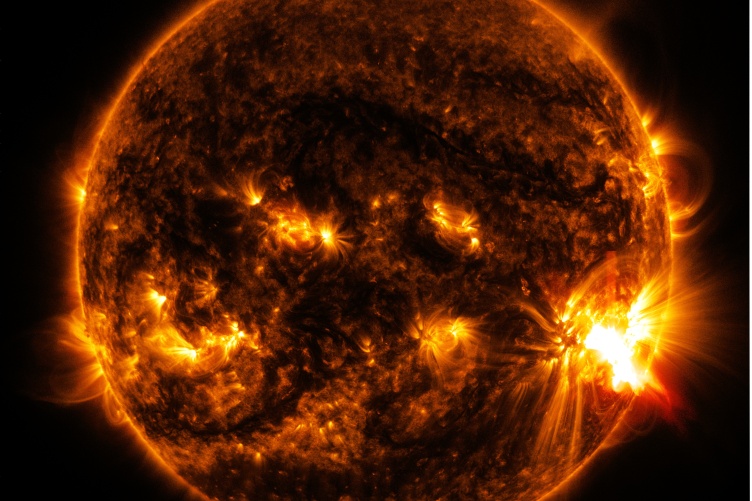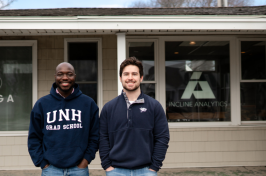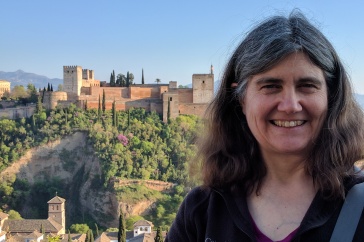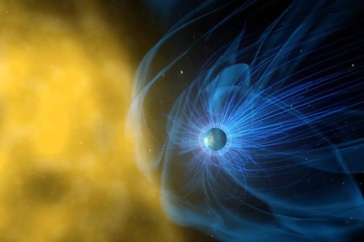
Photo credit: NASA/DSO
Researchers at the UNH Space Science Center are tapping into the power of artificial intelligence (AI) to forecast space weather — with surprisingly accurate results — near the Earth’s middle latitudes, including New Hampshire.
Space storms that originate from the sun and interact with our magnetosphere can generate beauty here on Earth — like the Northern Lights — or wreak havoc on our power grids and satellite communications. Researchers have long been searching for ways to predict these storms before they reach our magnetosphere to help protect valuable infrastructure. The previously developed physics-based forecasting models are time-intensive, so scientists are now testing out neural networks — a form of machine learning, or AI — in hopes of speeding up the storm prediction process. A new study published in the journal Space Weather focuses on using two different data sets to train the open-source neural networks to detect and forecast space storms.
“We were surprised at how well these machine learning models performed,” says Michael Coughlan, a Ph.D. candidate in physics and lead author on the new study. “In general, using neural networks can produce results more quickly, but you trade off some accuracy at first.”
"We were surprised at how well these machine learning models performed. In general, using neural networks can produce results more quickly, but you trade off some accuracy at first."
Changes in the Earth’s magnetic fields have been studied more in the high latitudes — regions closer to the Earth’s poles — than areas in the mid-latitudes, where more people live and more infrastructure exists, Coughlan explains. For those reasons, he chose to focus his research on mid-latitude regions. By relying on a combination of historic satellite data of the solar wind and underground magnetometers that have recorded changes in the Earth’s magnetic field from 1998 to 2017, he was able to train the neural networks to predict with reasonable accuracy the past magnetic field changes that resulted from those solar storms.
The study, which was funded by an NSF EPSCoR Track 2 award, is part of an effort to use big datasets to solve societal problems. Coughlan worked in collaboration with researchers at UNH and the University of Alaska, Fairbanks, who are part of the Team MAGICIAN — a group dedicated to learning more about how space currents behave once they’re closer to Earth. “The feedback from the group was enormously helpful,” Coughlan says. “They brought up ideas I hadn’t thought to do, or suggested I do things in different ways with the coding, making adjustments, offering to review my work. Machine learning can be tricky, but it can also be really fun to dig into the process and learn from it.”
Amy Keesee, UNH professor of physics and co-author on this research, says their goal is to have a forecasting model that would warn power companies when there’s a big space storm approaching so they could prepare for it and avoid catastrophic damage to infrastructure.
“We’re nowhere near this yet — we’re still in the early stages — but the findings of this study are fairly significant,” she explains.
Keesee notes that both machine learning and ground magnetometer research are fairly new fields of study for her. “I’m usually working with the magnetosphere, way out there,” she says, but this research is helping to tie it all together. “What’s really cool, now that I’m coming to the end of this project, is that I’m seeing how the ions on the night side of the Earth that I typically study are having an influence on what’s happening on the ground with the magnetic fields. I’m seeing all these phenomena come together.”
The UNH Institute for the Study of Earth, Oceans, and Space (EOS) is UNH's largest research enterprise, comprising six centers with a focus on interdisciplinary, high-impact research on Earth and climate systems, space science, the marine environment, seafloor mapping and environmental acoustics. With approximately 100 principal investigators managing more than 400 individual grant awards, and with annual expenditures exceeding $95 million, EOS fosters an intellectual and scientific environment that advances visionary scholarship and leadership in world-class and graduate education.
-
Written By:
Rebecca Irelan | Institute for the Study of Earth, Oceans, and Space | rebecca.irelan@unh.edu | 603-862-0990
















































